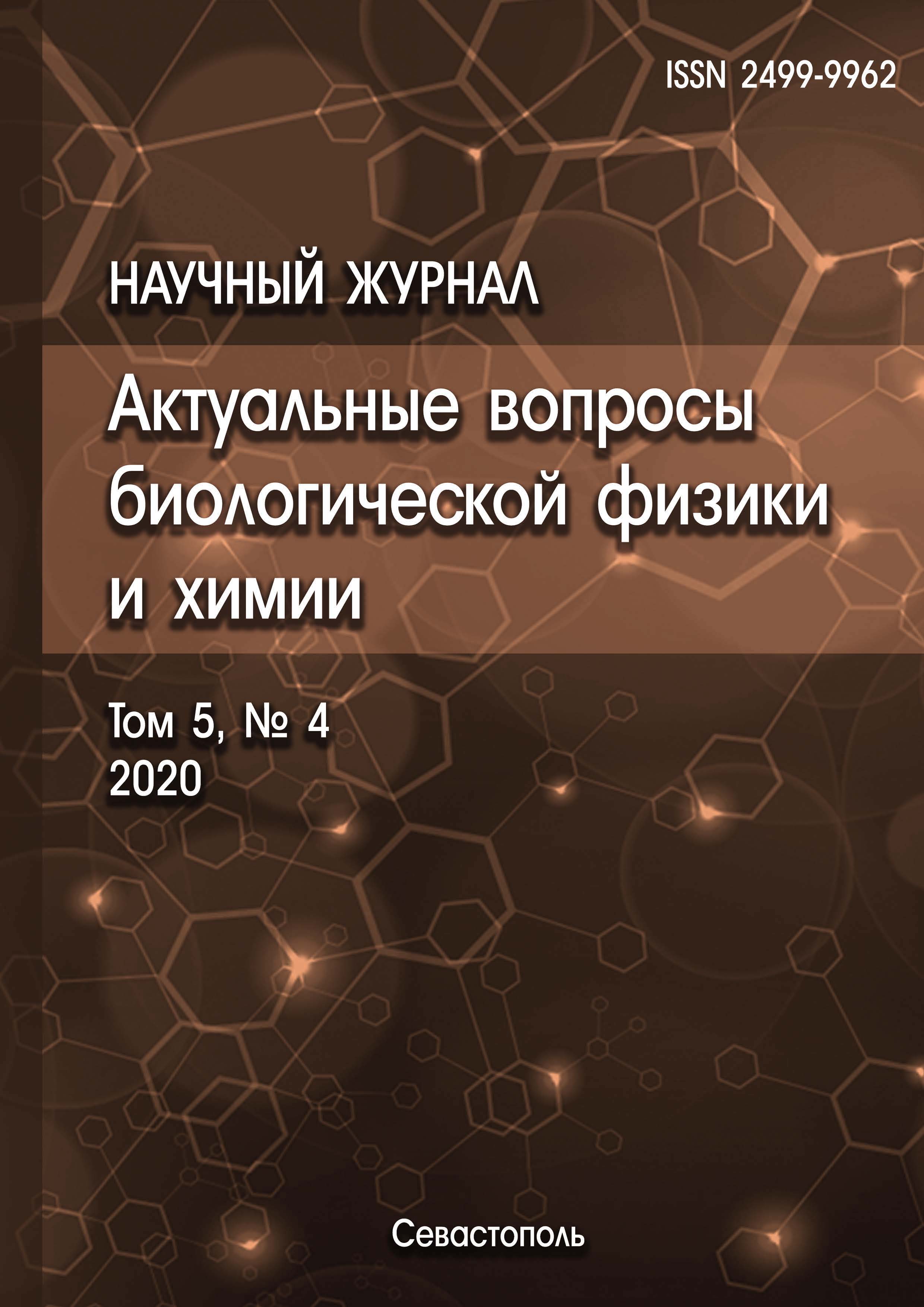Composite protein-polysaccharide hydrogels are used in the development of delivery systems and in regenerative medicine for the replacement and treatment of tissues and organocellular therapy due to the cheapness of raw materials, biocompatibility, low toxicity, and intrinsic biological activity of the components. In this work, the possibility of obtaining composite hydrogels based on the weakly charged non-gelling polysaccharide galactans from potatoes and the gel-forming protein fibrinogen was investigated. The results of the study show that fibrinogen binds to galactan, preserving the ability to enzymatic polymerization. The resulting composite hydrogels consist of fibrin fibers with polysaccharide globular particles incorporated into them, and characterized by a higher density, elasticity, and resistance to lysis as compared to pure fibrin, which makes them promising for biotechnological and biomedical applications.
protein-polysaccharide hydrogels, fibrin, potato galactan
1. Karfeld-Sulzer L.S., Siegenthaler B., Ghayor C., Weber F.E. Fibrin Hydrogel Based Bone Substitute Tethered with BMP-2 and BMP-2/7 Heterodimers. Materials, 2015, vol. 8, pp. 977-991. DOI:https://doi.org/10.3390/ma8030977.
2. Yahia L.H. History and Applications of Hydrogels. J. Biomed. Sci., 2015, vol. 4, pp.1-23.
3. Velema J., Kaplan D. Biopolymer-based biomaterials as scaffolds for tissue engineering. Adv. Biochem. Eng. Biotechnol., 2006, vol. 102, pp. 187-238. DOI:https://doi.org/10.1007/10_013.
4. Silva A.K., Richard C., Bessodes M., Scherman D., Merten O.W. Growth factor delivery approaches in hydrogels. Biomacromolecules, 2009, vol. 10, pp. 9-18.
5. Hubbell J.A. Materials as morphogene guides in issue engineering. Curr. Opin. Biotechnol., 2003, vol. 14, pp. 551-558.
6. de la Puente P., Ludeña D. Cell culture in autologous fibrin scaffolds for applications in tissue engineering. Exp. Cell Res., 2014, vol. 322, pp. 1-11. DOI:https://doi.org/10.1016/j.yexcr.2013.12.017.
7. Dong C., Lv Y. Application of collagen scaffold in tissue engineering: recent advances and new perspectives. Polymers, 2016, vol. 8, p. 42. DOI:https://doi.org/10.3390/polym8020042. EDN: https://elibrary.ru/WTOCHF
8. Rajangam T., An S.S.A. Fibrinogen and fibrin based micro and nano scaffolds incorporated with drugs, proteins, cells and genes for therapeutic biomedical applications.Int. J. Nanomed., 2013, vol. 8, pp. 3641-3662. DOI:https://doi.org/10.2147/IJN. S43945.
9. Noori A., Ashrafi S.J., Vaez-Ghaemi R., Hatamian-Zaremi A., Webster T.J. A review of fibrin and fibrin composites for bone tissue engineering.Int. J. Nanomed., 2017, vol. 12, pp. 4937-4961. DOI:https://doi.org/10.2147/IJN.S124671.
10. Davidenko N., Schuster C.F., Bax D.V., Farndale R.W. et al. Evaluation of cell binding to collagen and gelatin: a study of the effect of 2D and 3D architecture and surface chemistry. J. Mater. Sci. Mater. Med., 2016, vol. 27, p. 148. DOI:https://doi.org/10.1007/s10856-016-5763-9. EDN: https://elibrary.ru/SKVHYC
11. Laurens M., Engelse M.A., Jungerius C., Löwik C.W., van Hinsbergh V.W., Koolwijk P. Single and combined effects of alphavbeta3- and alpha5beta1-integrins on capillary tube formation in a human fibrinous matrix. Angiogenesis, 2009, vol. 12, pp. 275-285. DOI:https://doi.org/10.1007/s10456-009-9150-8. EDN: https://elibrary.ru/PTKIIH
12. Thakur B.R., Singh R.K., Handa A.K., Rao M.A. Chemistry and uses of pectin - A review. Critical Reviews in Food Science and Nutrition, 1997, vol. 37, no. 1, pp. 47-73. DOI:https://doi.org/10.1080/10408399709527767. EDN: https://elibrary.ru/YBQWVB
13. Hantgan R.R., Hermans J. Assembly of fibrin. A light scattering study. J Biol Chem, 1979, vol. 254, pp. 11272-11281.
14. Weisel J.W., Nagaswami C.Computer modeling of fibrin polymerization kinetics correlated with electron microscope and turbidity observations clot structure and assembly are kinetically controlled. Biophys J., 1992, vol. 63, pp. 111-128.
15. Smith M.C., Crist R.M., Clogston J.D., McNeil S.E. Zeta potential: a case study of cationic, anionic, and neutral liposomes. Anal Bioanal Chem, 2017, vol. 409, pp. 5779-5787. DOI: https://doi.org/10.1007/s00216-017-0527-z; EDN: https://elibrary.ru/YGRRZG
16. Nakatuka Y., Yoshida H., Fukui K., Matuzawa M. The effect of particle size distribution on effective zeta-potential by use of the sedimentation method. Adv Powder Technol, 2015, vol. 26, pp. 650-656.
17. Reviakine I., Johannsmann D., Richter R.P. Hearing what you cannot see and visualizing what you hear- interpreting quartz crystal microbalance data from solvated interfaces. Anal Chem, 2011, vol. 83, pp. 8838-48. DOI:https://doi.org/10.1021/ac201778h.
18. Dixon M.C. Quartz Crystal Microbalance with Dissipation Monitoring: Enabling Real-Time Characterization of Biological Materials and Their Interactions. Journal of biomolecular techniques, 2008, vol. 19, pp. 151-158. EDN: https://elibrary.ru/YAQHED
19. Wang X., Ruengruglikit C., Wang Y., Huang Q.Interfacial interactions of pectin with bovine serum albumin studied by quartz crystal microbalance with dissipation monitoring: Effect of ionic strength. J Agric Food Chem, 2007, vol. 55, pp. 10425-10431. DOI: https://doi.org/10.1021/jf071714x; EDN: https://elibrary.ru/YAJFLZ
20. Marxer C.G., Coen M.C., Greber T., Greber U.F., Schlapbach L. Cell spreading on quartz crystal microbalance elicits positive frequency shifts indicative of viscosity changes. Anal Bioanal Chem, 2003, vol. 377, pp. 578-586. DOI:https://doi.org/10.1007/s00216-003-2080-1. EDN: https://elibrary.ru/MEDKMD
21. Marxer C.G., Coen M.C., Bissig H. et al. Simultaneous measurement of the maximum oscillation amplitude and the transient decay time constant of the QCM reveals stiffness changes of the adlayer. Anal Bioanal Chem, vol. 377, pp. 570-577. DOI:https://doi.org/10.1007/s00216-003-2081-0. EDN: https://elibrary.ru/XPDGBB










